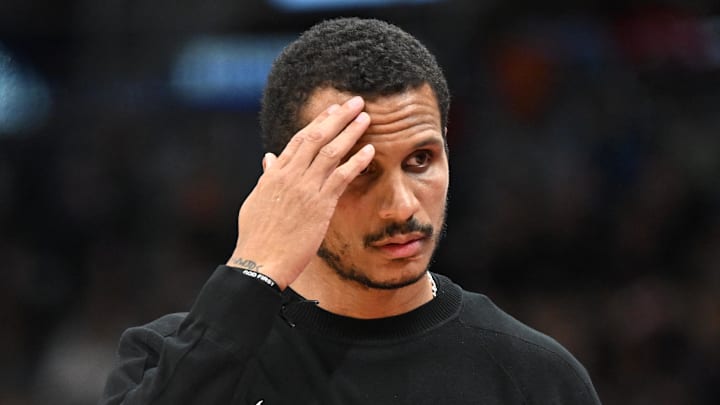BOSTON — Threes are still a staple of Boston Celtics basketball. Or, more specifically, two-on-one situations. “I've answered that question 100 times,” Joe Mazzulla said after the Celtics’ preseason win over the Cleveland Cavaliers on Sunday night. “Find a two-on-one, make the right play vs. the two-on-one. It’s that simple.”
Getting to those two-on-one situations may not look the same, however. Jayson Tatum is sidelined, and Boston lost a ton of three-point talent over the summer. Now, instead of having two great shooters in almost every action, they’re going to have to adjust. But the core principle of creating two-on-one situations remains firmly in place.
“Last year, there were two 38% three-point shooters in a two-on-one situation, so it was a pass, pass shot,” Mazzulla said. “This year, there may not be a 38 to 40% three-point shooter in a two-on-one situation, so that two-on-one may be created off a cut, and then you can create a two-on-one in a different way. Then the cut allows us to get an offensive rebound.”
Celtics threes are coming in new ways
The Celtics still have plenty of three-point talent in their lineup. Derrick White, Payton Pritchard, and Sam Hauser are three of the best long-range players in the NBA. And alongside them is Jaylen Brown, an elite scorer in his own right.
But with the rest of the roster in flux and Boston boasting a much faster play style this season, the process of getting to their shots beyond the arc will inevitably change.
Sometimes, it’s running the break and forcing the Cavaliers to sink in. Brown did just that in the third quarter, sprinting in transition and creating an open three-point opportunity for Anfernee Simons.
Other times, post pressure can suck in defenders. Like when Luka Garza posted up Tyrese Proctor at the beginning of the fourth quarter. Nae’Qwan Tomlin hovered too close to the paint, and Josh Minott was able to drift up to the wing, nailing an and-one three after a bad Tomlin close-out.
Off-ball cuts can force defenders into the paint. Minott and Chris Boucher could be key in that regard. Boston’s bigs are screening more than ever this year, which could force more two-on-ones. Transition opportunities. Offensive rebounding. Two-on-ones can spawn from anywhere.
This year may not be as straightforward as last season. But Mazzulla’s two-on-one principle still applies.
Just as it has for the past three years.
“I've answered that for three years,” Mazzulla said. “Why do we keep asking that? Create two-on-ones. Find a two-on-one. Everybody should be able to answer that question verbatim, based on my answers to that question for almost three years now.”
